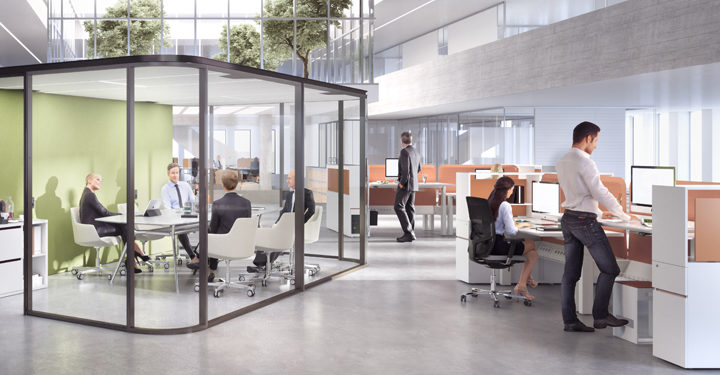Imagine going to work one day and being able to use your smartphone to tinker with settings that control various things in your office.
Upon arrival, the facial recognition system immediately identifies you as an employee and prompts the security team to let you in. As you walk towards your office, its doors automatically open. Inside, a steaming cup of coffee awaits, and a friendly electronic voice gives you a rundown of the day’s agenda.
It sounds like a scene from a sci-fi movie, doesn’t it?
But the truth is, everything mentioned above are just a few of the things that are already happening in today’s smart offices.
A smart office is defined as a workplace that employs smart software to collect and automate data in real-time, allowing employees to work faster and more efficiently. In the meantime, wireless systems make the working environment intelligent by controlling lighting, temperature, and security. The Internet of Things (IoT) plays a major role in this kind of setup where smart connected devices let people do more things to benefit the company.
But why aren’t we seeing a lot of this today?
The Reality of Smart Offices
However perfect smart offices may seem, many obstacles and challenges hinder the adoption of smart offices.
Cost is one of its biggest hurdles. The traditional office has too many devices and appliances that have to be ported over to support a smart office environment. And not only that, the effort that needs to be done to deploy such systems, including the necessary reconstructions and outfitting, can make a company reconsider if the investment is worth it.
Then there’s the fear of increased cybersecurity risks in the IoT-reliant offices. Cybercriminals are always looking for ways to exploit these spaces — attacks can come in the form of viruses, perpetrators can take advantage of risky storage practices, or hack employees’ personal devices connected to the office WIFi networks jeopardizing the whole system.
And since privacy is a growing concern in the shared workspace industry, organizations that collect sensitive personal information will have to come up with infallible countermeasures to prevent intentional or accidental loss of data.
Last but not least, employees are also concerned about the integration of smart systems. Some of them are inherently reluctant to change — the thought of having to learn and adapt to something new can be frightening for people who think that their jobs are on the line if they can’t keep up.
Smart Office Applications
Despite the challenges that smart offices face, innovators and developers today are pushing forward with what they believe will be the future of the workplace. Let’s take a closer look at some of its smart applications:
Smart security
- Facial and ID recognition systems ensure that each person within a facility is authorized to be there.
- Smart devices enable immediate granted use of an assigned laptop for newly-hired employees or instantly exclude recently-fired workers from sensitive data.
Energy control
- Sensors automatically turn off or dim lights in office areas where no one is present.
- Smart HVAC (heating, ventilation, and air conditioning) systems can detect indoor temperature and adjust accordingly.
Smart meetings
- Smart software schedules team meetings based on each member’s availability and provides everyone with the right time and place to meet.
- Virtual reality tools let team members and clients meet in virtual environments, allowing better collaboration on designs and processes.
Smart furniture
- Smart office desks adjust to the preferred height of users or prompt individuals when it’s time to change postures.
- Smart tables and desktops can automatically charge employees’ mobile devices, avoiding wires and cables that can easily get tangled.
Office maintenance
- Office sensors monitor and inform users when certain equipment needs to be replaced soon.
- Facility managers are informed of areas that require cleanup, allowing them to send out cleaning teams immediately.
The smart office concept promises many benefits. But at the same time, it offers numerous challenges. Businesses will eventually adopt them as soon as concerns over security and costs are addressed.


